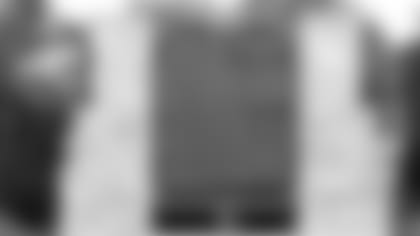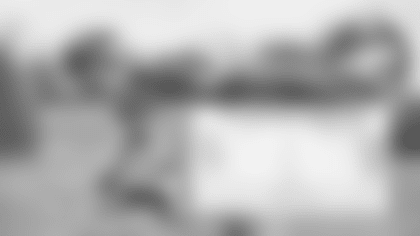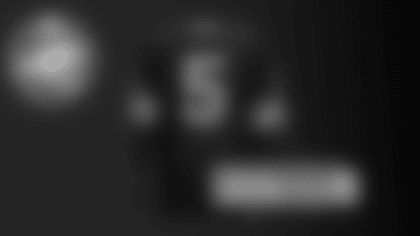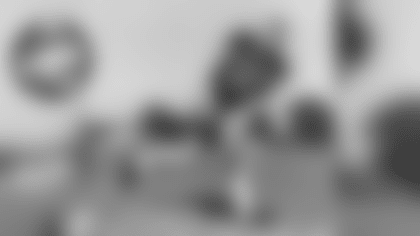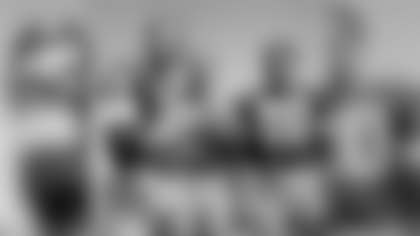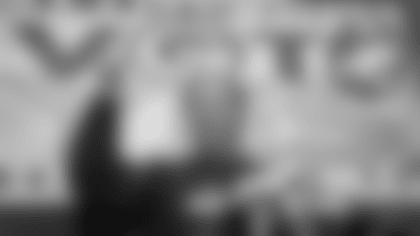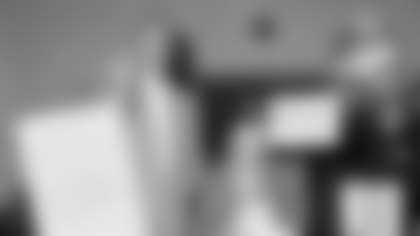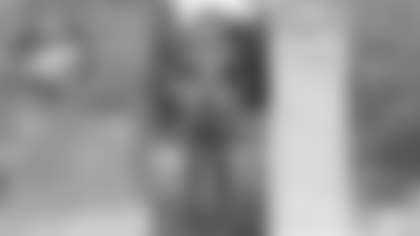Eric from Beaver Dam, WI
I appreciate your love of Packers history and the work you did to make the Packers Heritage Trail a reality. I'm a Wisconsin history enthusiast, especially regarding the state's Historical Marker program. I visit as many as I can but am most interested in trying to locate markers that have been reported as missing. One of our state's most iconic historical markers, "Green Bay Packers," has been missing for some time now. It used to be located at Lombardi Avenue and Oneida Street but must have been removed during one of the Lambeau Field or Don Hutson Center construction projects. I'm writing to see if you would have any interest in trying to locate this missing marker. I would love to see the sign re-erected somewhere near the stadium or in the hall of fame. I've contacted the Packers Hall of Fame, the Brown County Historical Society and the Brown County Highway Department in an attempt to locate it with no results.
I appreciate your interest in Packers history, and you've raised a question that's one of the great mysteries about it.
The marker stood outside the entrance to the old Packers Hall of Fame when it was located at the north side of the Brown County Veterans Memorial Arena. It was installed in late October 1977, a little more than a year-and-a-half after the hall relocated to the arena, moving into permanent quarters for the first time.
The marker was located on a small island in front of the hall and weighed 250 pounds.
At some point around the time the Packers Hall of Fame moved into the newly reconstructed Lambeau Field in 2003, the Green Bay Press-Gazette reported that the marker "was left behind this summer when the hall's contents were moved to new quarters at Lambeau Field." The paper didn't explain if the marker was still standing at the same spot or where it was.
The arena wasn't demolished until 2019, although the historical marker had been long missing at that point.
Anyway, in 2003, the Press-Gazette asked then team president Bob Harlan and then hall of fame president Mike Gage about future plans for the marker. Harlan said he didn't think the Packers owned it, and he didn't have an answer at that time for where it should go. Gage said he figured the state owned it, not the Green Bay Packers Hall of Fame, Inc., a separate entity from the franchise.
Joe DeRose, who oversaw the Wisconsin Historical Society marker program, said both were wrong. He said the Packers owned it.
But what happened to it?
Here's what I can tell you. Roughly seven years ago, after creating the Packers Heritage Trail with the help of others, I talked with someone who identified himself as "Weasel." In brief, he told me that he had the marker and lived in Ohio.
How did he get it?
He said he was touring with several bands – he didn't know the year but thought it was maybe several years later than 2003 – and purchased a postcard of the marker when he entered Wisconsin from the south in the midst of a blizzard and stopped at a truck stop while enroute to Green Bay. He said the band he was with played somewhere near Lambeau Field, and that he stayed at a nearby "ma and pa motel," likely the Arena Motel, which was next to the arena.
Here's his story:
"We got up to the civic center or whatever it was next to Lambeau Field where we were playing and one of the drivers goes, 'Hey, Weasel Diesel, you need this in your museum.' In the dumpster was that sign with a great big crack in it. It was like, 'Wow, I just bought a postcard of this.' One of the stagehands goes, 'Oh somebody wants to take it home and has already claimed it.' Then, about 3 o'clock in the morning, it was still at the dumpster and so I put it in the trailer with about five other guys. Gosh, it had to weigh over 300 pounds.
"There had to be 10- or 12-inch ruts in the grass and a big pile of bricks that held up one side of it. The one side the bricks were still pretty much there. The other side it was just a big pile. Apparently, either somebody hated Green Bay and said they were taking out the sign with their pick-up or a drunk ran off the road. We just figured the groundskeeper there put it in the dumpster because it had like a two-foot crack in it.
"The only way to put it back together would be to completely break it and then like sandwich it together. It has a big crack in it and it's so heavy. A lot of people have wanted to buy it, but I'm not sure what it's worth."
When I asked him if he was concerned that he might be accused of taking stolen property, he answered no.
"No, it was from a dumpster," he said. "Getting in trouble is the last of my concerns. It was from a dumpster. I call it lawn shopping. One man's trash is another man's treasure. I'm sure whoever hit it had to be pulled out by a tow truck."
Our conversation ended and I tried to make contact with him again not long after that but got no response. At that time, I had no idea who owned the marker but was hoping that if there was any way of salvaging it, he might be willing to discuss the matter with someone in an official capacity.
Maybe if he reads this, he'll get in touch with me again. But based on his description, it sounded like the marker was beyond repair. Plus, nobody seemed to want it in the years between 2003 and when he pulled it from a dumpster, so would anybody in an official capacity be interested in it now?
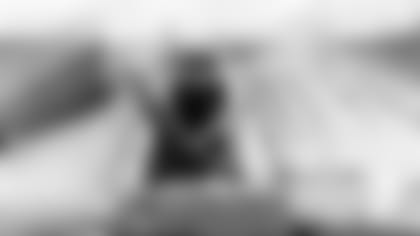
Alex from Omaha, NE
I recently took a Lambeau Field stadium tour and one of my favorite parts was when the tour guide pointed out the slab of concrete in the tunnel that had been moved from the original player tunnel. How long was the tunnel in the north end zone and how did it work to move the slab to the new tunnel?
The tunnel was constructed in the north end zone in 1965.
When what was Green Bay City Stadium opened in 1957, both the home and visiting locker rooms were located in a cement block building in the concourse of the south end zone. At the time, there were only 21 rows of seats in the end zones, all dug into the ground and basically stretching from the goal line on the west side of the stadium to the goal line on the east side of the stadium.
Both home and visiting locker rooms were located in the building with the Packers occupying the east side of it. As a result, both teams entered the field from the wide ramp that divided the east stands from the west stands. The ramp and the locker rooms were located almost directly behind the south goal posts.
There were only 35 lockers in each dressing room, so they weren't exactly spacious. Thirty-five was the roster limit at the time. Nevertheless, after the second game, coach Lisle Blackbourn started holding the Tuesday team meetings – players had Monday off back then – in the locker room rather than in the cramped second floor meeting room in the Packers' office building on Washington Street in downtown Green Bay.
The Packers used that dressing room at the south end for six seasons.
In 1963, before Vince Lombardi's fifth season as coach, the Packers built a new administrative building at the north end of what was still Green Bay City Stadium and moved their offices from downtown. The building included dressing rooms for both home and visiting teams, including a 30-by-60 foot carpeted one for the Packers. For the next two seasons, both teams used the wide ramp at the north end to enter and exit the field.
Meanwhile, the old locker rooms on the south side were converted into men's and women's restrooms, although the football teams at Green Bay West and Southwest high schools, which still used the stadium as a home field, continued to use the restrooms for locker rooms.
Before the 1965 season, when the stadium was renamed Lambeau Field, a 190-foot tunnel was dug from field level, just east of the middle ramp, to the locker room area of the administrative building. The tunnel was included as part of a stadium expansion that created 12,100 new permanent seats and increased capacity to more than 50,000. The overall capacity increased by only a little more than 8,000 because 6,358 bleacher seats located on the south and north end concourses were removed.
As a result of that expansion, the south end zone was enclosed for 60 rows. At the north end, extensions to the east and west stands reduced the gap in the middle of the concourse, but there was still an opening with only 21 rows of seats. At that point, Lambeau had the look of a horseshoe. In 1970, another expansion completed the bowl.
Thus, Lombardi's three-peat championship teams used the north tunnel, including the day of their victory over Cleveland for the 1965 NFL championship and for the Ice Bowl.
More than three decades later, a strip of concrete slabs from the north tunnel were preserved and installed in the longer, wider tunnel in the southeast corner of the stadium that was built as part of the 2000-03 redevelopment of Lambeau. While the project wasn't completed until 2003, the Packers started using the new tunnel in 2002.
Saving the slabs was done at the insistence of then head coach and general manager Mike Sherman in honor of the Packers' rich history.
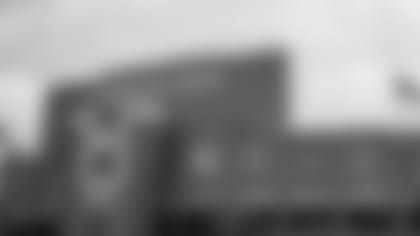
Bailey from Kansas City, MO
I've been wondering for a while now after noticing, why is the 'u' on Lambeau Field signs/logos lowercase, while the rest of 'Lambeau Field' is uppercase?
You're asking someone who couldn't draw a stick figure in grade-school art. So, I asked members of our brand and marketing department.
Joan Malcheski, director of the department, tells me it was a custom font that was developed before she started working for the Packers. She believes it was done during the stadium renovation in the early 2000s. She wondered if you thought it needed to be Sans-Serif when it comes to the U but also noted many fonts have a serif, even on the bottom of a capitalized U.
That was all foreign language to me, but Bill Luebker, our manager of creative design, tried to translate it.
Here's Bill's explanation: "What this person is asking is why did the designer decide to use a lower case 'u' verses an upper case 'U' in the logo/type design? There is no explanation other than the designer who created the word mark thought that the lower-case 'u' worked better with the overall design aesthetic than an upper case 'U." As with any design or art piece, it's all subjective."
Hope that answers your question.
Claire from Green Bay
I really need your help. Could you please look up for me the exact date of the Packers' 50th anniversary parade that was celebrated in downtown Green Bay. I was at that as a kid, and I need that exact date.
As a reminder to readers, I need the name of the city or town, plus state, where you currently reside in order to answer your questions. Without that information, I don't have time to try and hunt it down. Generally speaking, I think the information is of interest to readers, as well. Months later than I'd like to have responded, your answer is Sept. 20, 1969. It was a weekend celebration before the season opener, and the highlight was the Saturday afternoon parade. Leading the parade were the five surviving original, 1919 Packers: Fritz Gavin, Wally Ladrow, Al Petcka, Carl Zoll and Gus Rosenow.



